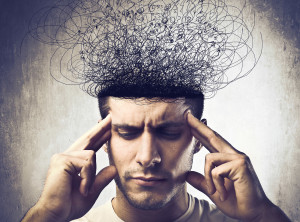For some people, resisting the new shoes or nice sweater on sale just is not possible. I know personally every time I start browsing the internet I end up on Forever21’s website with a cart full of clothing. A shopaholic is defined as “someone who shops compulsively and who may feel like they have no control over their behavior.” I have heard this time numerous times in my life time, although it is generally referred to in a joke matter. Is it possible to be an actual shopaholic?
Shopaholics are real and they come in all different types of forms, according to psychguiedes.com. The different types are as followed:
- Compulsive shoppers– they venture out to the stores when they’re feeling some sort emotional distress
- Trophy seekers– they are after a very specific product and don’t stop until they find the perfect thing
- The “Big Spender”– looking for expensive/flashy items
- Bargain shoppers– buying things you don’t need just because there’s a sale
- The shopper who buys things just to return them
- Collectors
- Causes:
In an observational study done at Indiana University, they looked at how the brain functioned while certain people shopped. As shoppers bought more and more, their brain’s released endorphins and dopamine. While this could be by chance, it is believed that the feeling caused by the release of endorphins and dopamine is addictive. In other words, it is the way your brain feels while shopping that causes the addiction. According to Professor Ruth Engs, 10-15% of people have this feelings. According to Donald Black from the University of Iowa , “nearly two-thirds of all shopaholics struggle with depression or anxiety.” This made me question the difference between an anxiety disorder and a shopaholic and whether or not the two were the same thing. While bother show similar behavior, shopaholics display unique behaviors as follow:
more and more, their brain’s released endorphins and dopamine. While this could be by chance, it is believed that the feeling caused by the release of endorphins and dopamine is addictive. In other words, it is the way your brain feels while shopping that causes the addiction. According to Professor Ruth Engs, 10-15% of people have this feelings. According to Donald Black from the University of Iowa , “nearly two-thirds of all shopaholics struggle with depression or anxiety.” This made me question the difference between an anxiety disorder and a shopaholic and whether or not the two were the same thing. While bother show similar behavior, shopaholics display unique behaviors as follow:
Sign/Symptoms:
- Spending more money than they have
- Angry or sad shopping
- Spending habits are putting relationships at risk
- Can’t control spending habits
- Lying about how much they spent
- Hiding evidence of shopping (bills or receipts)
Most people report the short term shopping addiction effects to be positive since the initial rush of a shopping spree is what triggers an addiction. The long term affects are what tends to be the problem when it comes to shopping problems. The severity of shopping problems can vary obviously. While some people just max out credit cards or spend their money, others end up taking second mortgages out on their house. No matter what the case is, it will definitely have an effect on not only your life, but the life others and relationships you hold with them. According to experts, such behavior can even lead to divorce. While this disease by not sound that serious, the Chicago Tribune found that many people with shopping problems actually suffer from withdrawal symptoms comparable to drug addicts. This includes feelings of irritability, anger, and depression. In a study done by MSN Money, they were looking for a drug that could treat those with shopping problems. While these researches have not found anything to treat the problem directly, ABC News did a report on a drug called memantine, which was developed by Annals of Clinical Psychiatry. This drug was originally designed to treat Alzheimer’s, but was thought to be able to help with the compulsive behavior shopaholics generally have.
The correlation between those with anxiety and shopping problems is strong. While forms of anxiety may not be proven as the cause of a shopping addiction, there are studies showing they correlate. In an experimental study done with a controlled group, a huge improvement was seen those who were given an anti-anxiety medication versus those who were not when it came to spending habits. All the effects of the drugs are still being analyzed, but a few side effects showed the following:
What’s the conclusion?
Being a shopaholic is a real disease. While it correlates strongly to those with anxiety disorders, there are distinct differences between the two. It is unknown whether or not anti-anxiety medication is the best treatment for this problem or not, but it a problem that is definitely underestimated.
Just because you enjoy a shopping spree every once in a while doesn’t necessarily mean you are a shopaholic, but if you find yourself experiencing out of control behavior, it may be a problem. If you take a look through your closet at there are multiple items that still have the tag on them, it may be time to get some help. The best advice for most shopaholics is to try new things, like running, movie watching, or crafting. Look for what triggers your shopping escapades and do NOT do that. Whether it is stress at work or an argument with a loved one, resist the urge. Do not go to the mall unless it is necessary and avoid going on the computer to online shop. Instead focus on your newly founded hobby and enjoy life with more money and less stress!



 e ghosts can show themselves in the form of dark shadows, and then try to prove that point. While that is one way to go about trying to prove something, it is not exactly the most scientific. Assuming theories about ghosts has not lead to any earth shattering breakthroughs. As we learned in class, the proper way to test a hypthosisies is by going through the scientific method. It is necessary to collect data and evidence, conduct tests, and use your results to draw a conclusion.
e ghosts can show themselves in the form of dark shadows, and then try to prove that point. While that is one way to go about trying to prove something, it is not exactly the most scientific. Assuming theories about ghosts has not lead to any earth shattering breakthroughs. As we learned in class, the proper way to test a hypthosisies is by going through the scientific method. It is necessary to collect data and evidence, conduct tests, and use your results to draw a conclusion.
 edically, it doesn’t make sense that that clinching your waist tightly will make it permanently smaller. Once you take the garment off, your body will return to its usual shape. It’s also uncomfortable, restricts your movements, and if you wear it really tight, it can even make it difficult to breathe and theoretically could cause rib damage.” This is a general consensus among experts. While it is thought that wearing the waister trainer makes you sweat more, the general rule is that 3,500 calories=1lb. With that being said, the amount you sweat from it will not cause your to lose so much weight you really see a difference.
edically, it doesn’t make sense that that clinching your waist tightly will make it permanently smaller. Once you take the garment off, your body will return to its usual shape. It’s also uncomfortable, restricts your movements, and if you wear it really tight, it can even make it difficult to breathe and theoretically could cause rib damage.” This is a general consensus among experts. While it is thought that wearing the waister trainer makes you sweat more, the general rule is that 3,500 calories=1lb. With that being said, the amount you sweat from it will not cause your to lose so much weight you really see a difference. help us lose weight quickly and keep it off, it just isn’t possible with changing your lifestyle. A well balanced diet with the right amount of complex carbs like bread, rice, and whole grain pasta, dairy/milk, lots of fruits and veggies, and protein are what is necessary to live a healthy life and see the results you want to see. Balance is essential in a healthy diet. It is important to eat the right amount of nutritious food in order to maintain a healthy body weight. The ideal plate is shown on the right, produced by Harvard’s Health Publications. In America, it is no secret that obesity is a problem. According to a national tally on
help us lose weight quickly and keep it off, it just isn’t possible with changing your lifestyle. A well balanced diet with the right amount of complex carbs like bread, rice, and whole grain pasta, dairy/milk, lots of fruits and veggies, and protein are what is necessary to live a healthy life and see the results you want to see. Balance is essential in a healthy diet. It is important to eat the right amount of nutritious food in order to maintain a healthy body weight. The ideal plate is shown on the right, produced by Harvard’s Health Publications. In America, it is no secret that obesity is a problem. According to a national tally on 



 I don’t know about everyone else, but as it starts to get colder, I find myself becoming increasingly lazy and tired. The thought of going out on a Friday night is no longer as appealing as laying in my bed and binge watching a season of Grey’s Anatomy. Now obviously most people do not prefer to spend their time walking a few miles to their destination in the freezing cold, but I’m wondering, does the change in seasons actually effect your mood?
I don’t know about everyone else, but as it starts to get colder, I find myself becoming increasingly lazy and tired. The thought of going out on a Friday night is no longer as appealing as laying in my bed and binge watching a season of Grey’s Anatomy. Now obviously most people do not prefer to spend their time walking a few miles to their destination in the freezing cold, but I’m wondering, does the change in seasons actually effect your mood? 
 d an analogous decrease during autumn and winter months, that is a constant, if not a universal behavior that affects both the Norther and Southern hemisphere.” This was finding of a meta-analysis studying the link between seasons and suicide in 2012. In another study in Sweden, from 1992-2003 the same pattern was discovered. A peak for suicides was found in the spring and summer months.
d an analogous decrease during autumn and winter months, that is a constant, if not a universal behavior that affects both the Norther and Southern hemisphere.” This was finding of a meta-analysis studying the link between seasons and suicide in 2012. In another study in Sweden, from 1992-2003 the same pattern was discovered. A peak for suicides was found in the spring and summer months. What exactly is a black hole?
What exactly is a black hole?  up to 20 times greater than the mass of the sun and can fit inside a ball with a diameter of about 10 miles. Dozens of stellar mass black holes may exist within the
up to 20 times greater than the mass of the sun and can fit inside a ball with a diameter of about 10 miles. Dozens of stellar mass black holes may exist within the  surrounding it. A star’s motion is the key factor in determining if a black hole is around it. Generally, if it is orbiting a point in space, there is a black hole there. High-energy light is produced by stars and black holes being close. Scientists can use specific instruments to see this light, which is another way to find black holes. There is something called a accretion disc, which is defined as “a black hole’s gravity that is strong enough to pull off the outer gases of the star and grow a disk around itself,” according to Nasa. This disk releases X-ray lights due to it’s high temperatures, which makes it possible for scientist’s telescopes to pick up on the light. This is one of the many methods scientists use to pick up on black holes.
surrounding it. A star’s motion is the key factor in determining if a black hole is around it. Generally, if it is orbiting a point in space, there is a black hole there. High-energy light is produced by stars and black holes being close. Scientists can use specific instruments to see this light, which is another way to find black holes. There is something called a accretion disc, which is defined as “a black hole’s gravity that is strong enough to pull off the outer gases of the star and grow a disk around itself,” according to Nasa. This disk releases X-ray lights due to it’s high temperatures, which makes it possible for scientist’s telescopes to pick up on the light. This is one of the many methods scientists use to pick up on black holes. Starting a new chapter in your life can be stressful. As if the work load in college isn’t hard enough, we are now beginning to live on own, make our own decisions, and live life as an adult instead of a child being watched by your parents. This is a huge change in your life and it is very exciting. One of the biggest fears college students have is a well known myth known as the
Starting a new chapter in your life can be stressful. As if the work load in college isn’t hard enough, we are now beginning to live on own, make our own decisions, and live life as an adult instead of a child being watched by your parents. This is a huge change in your life and it is very exciting. One of the biggest fears college students have is a well known myth known as the  So why is this myth even a thing?? How did it come to be?
So why is this myth even a thing?? How did it come to be? 
 ughter, but more of a panic.
ughter, but more of a panic. 
 Now is the time of year where work load gets heavy. Exams and papers are due one after another and you feel like you don’t have a second of the day to relax. With the weight of school work, extra curricular activities, and jobs on your shoulders, you are in a deep hole that you won’t be able to dig yourself out of until Christmas break. The constant feeling of stress is something we are all pretty used to at this point. Most of us just ignore how we feel, knowing there is not time to feel bad for yourself, right?
Now is the time of year where work load gets heavy. Exams and papers are due one after another and you feel like you don’t have a second of the day to relax. With the weight of school work, extra curricular activities, and jobs on your shoulders, you are in a deep hole that you won’t be able to dig yourself out of until Christmas break. The constant feeling of stress is something we are all pretty used to at this point. Most of us just ignore how we feel, knowing there is not time to feel bad for yourself, right?
 he problem comes when people base their self worth on the amount of likes they get on an Instagram picture or retweets on Twitter.
he problem comes when people base their self worth on the amount of likes they get on an Instagram picture or retweets on Twitter. ere are 7 signs to tell if it is:
ere are 7 signs to tell if it is:
 r the study session. If you pull an all nighter, it is too hard to catch up on sleep, and you’ll find yourself being drowsy and tired for days until your body catches up on sleep.
r the study session. If you pull an all nighter, it is too hard to catch up on sleep, and you’ll find yourself being drowsy and tired for days until your body catches up on sleep. much to keep your room clean and orderly, just a little time and dedication.
much to keep your room clean and orderly, just a little time and dedication.

 According to
According to 

 choice, with a countless amount of sugar that could lead to weight gain and bad health, but some people can’t do with the bubbly beverage in hand everyday.
choice, with a countless amount of sugar that could lead to weight gain and bad health, but some people can’t do with the bubbly beverage in hand everyday.
